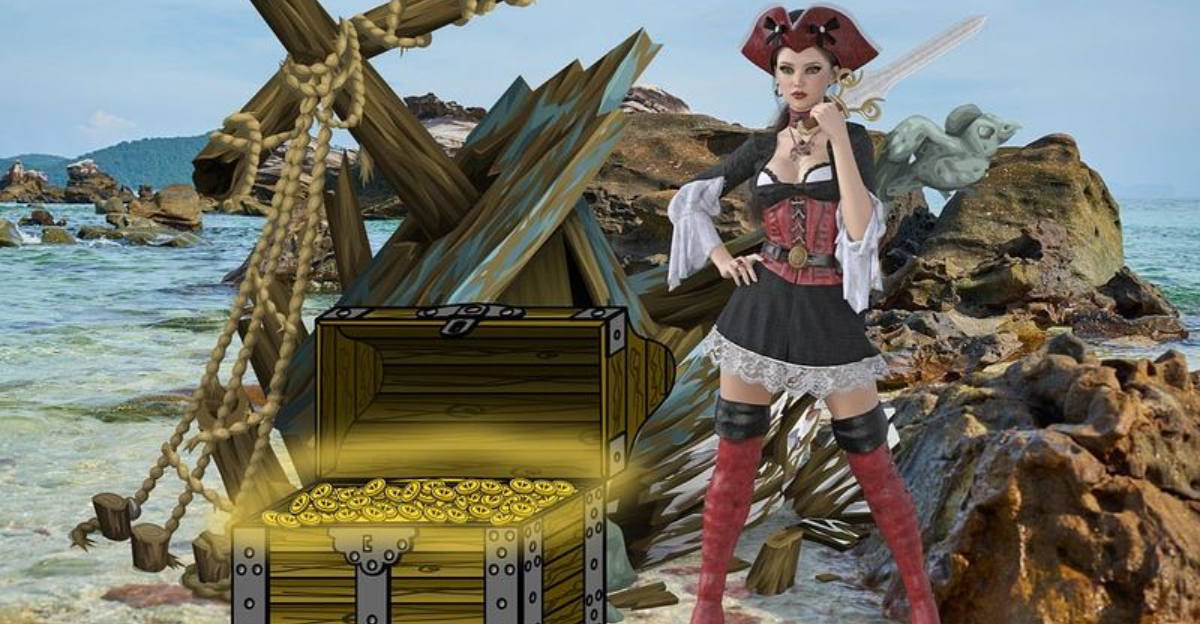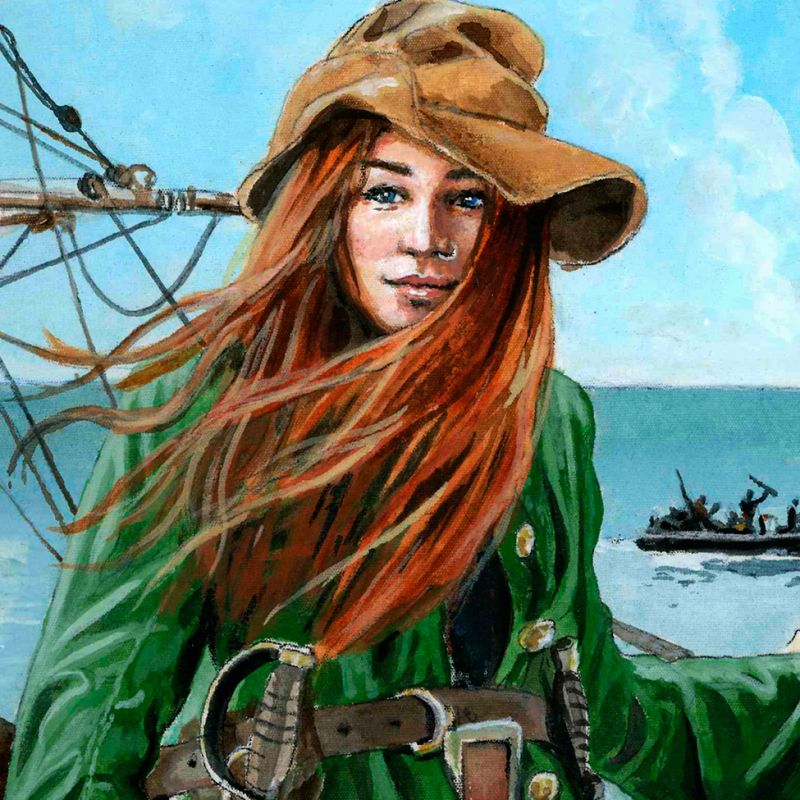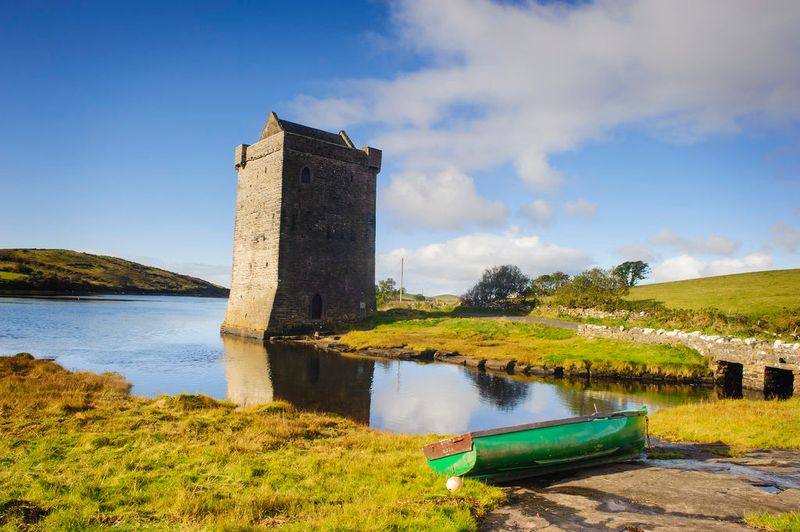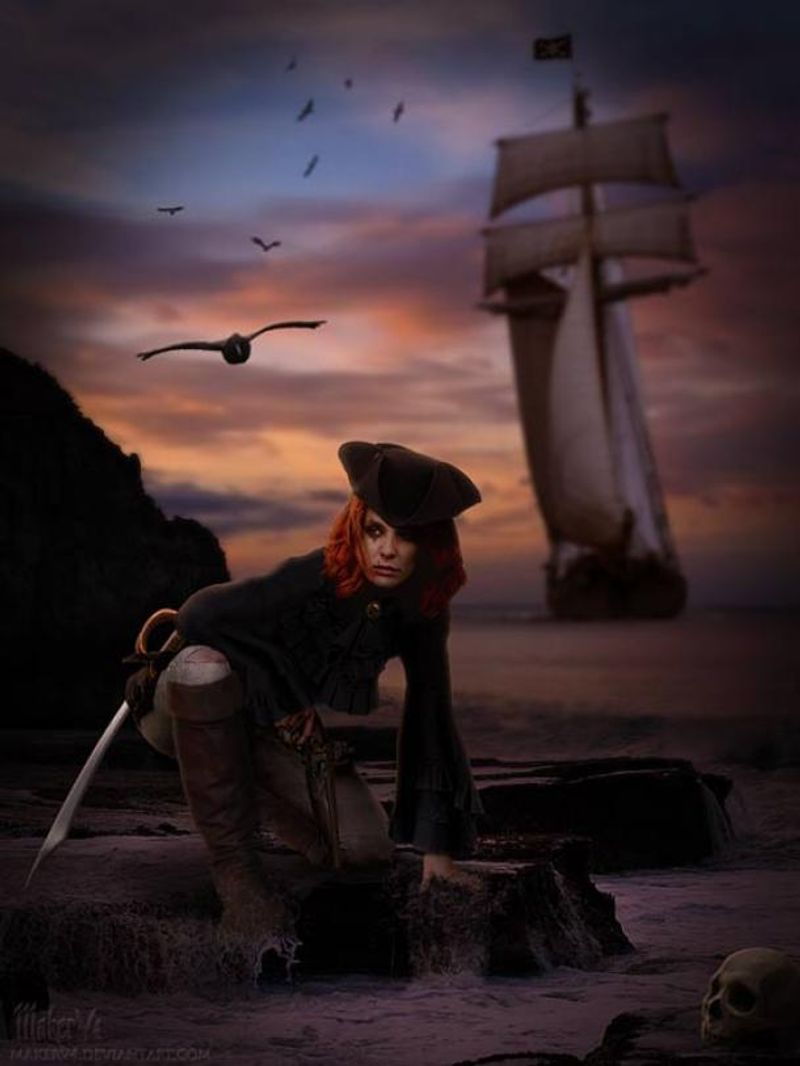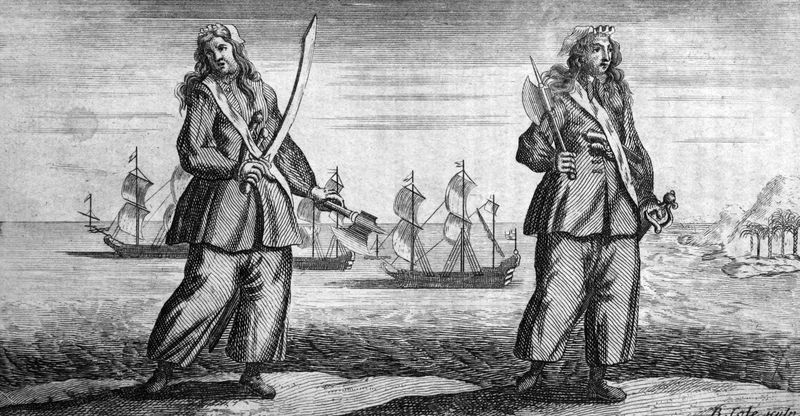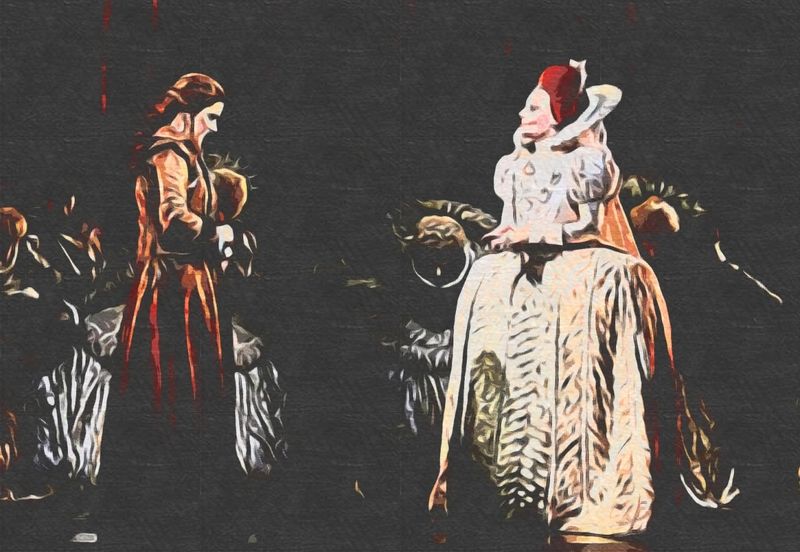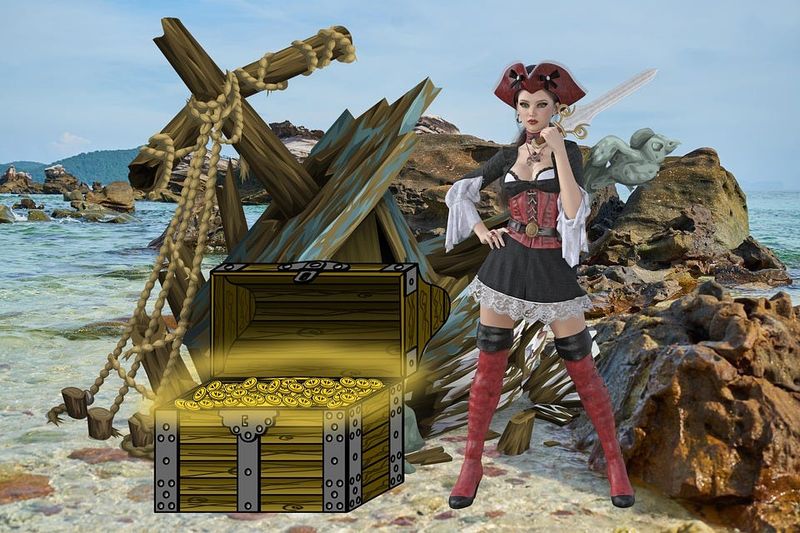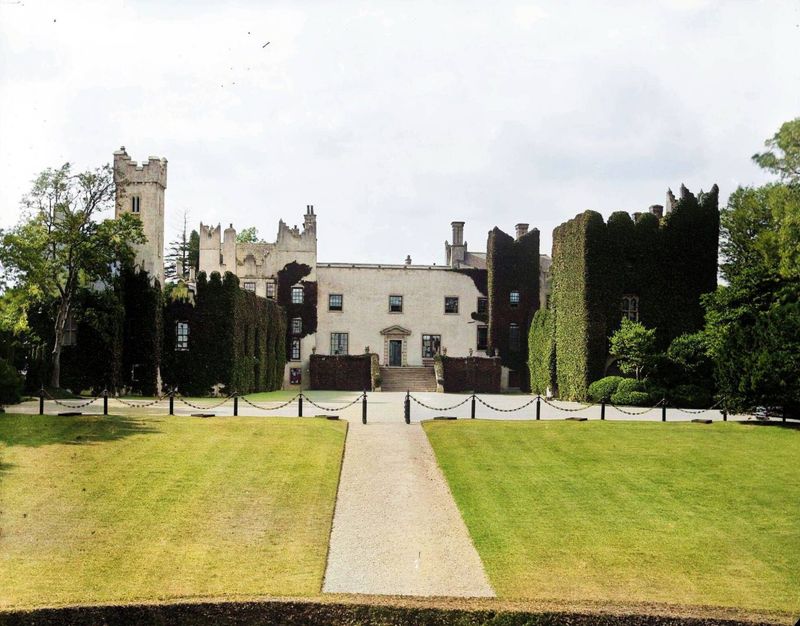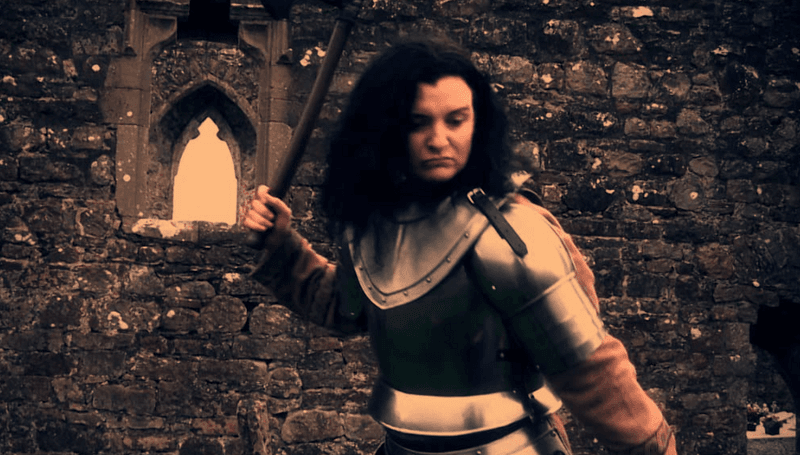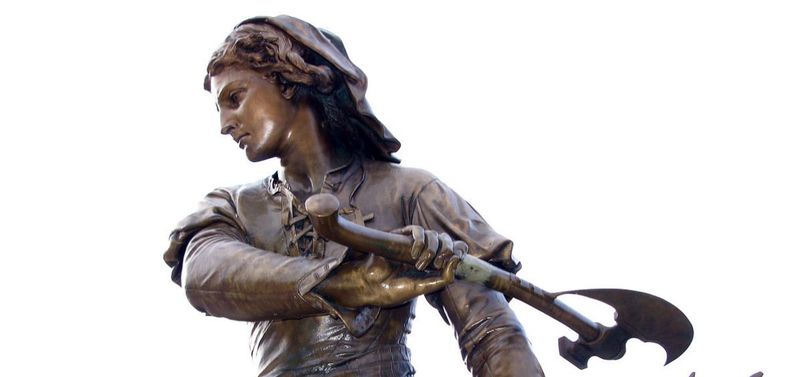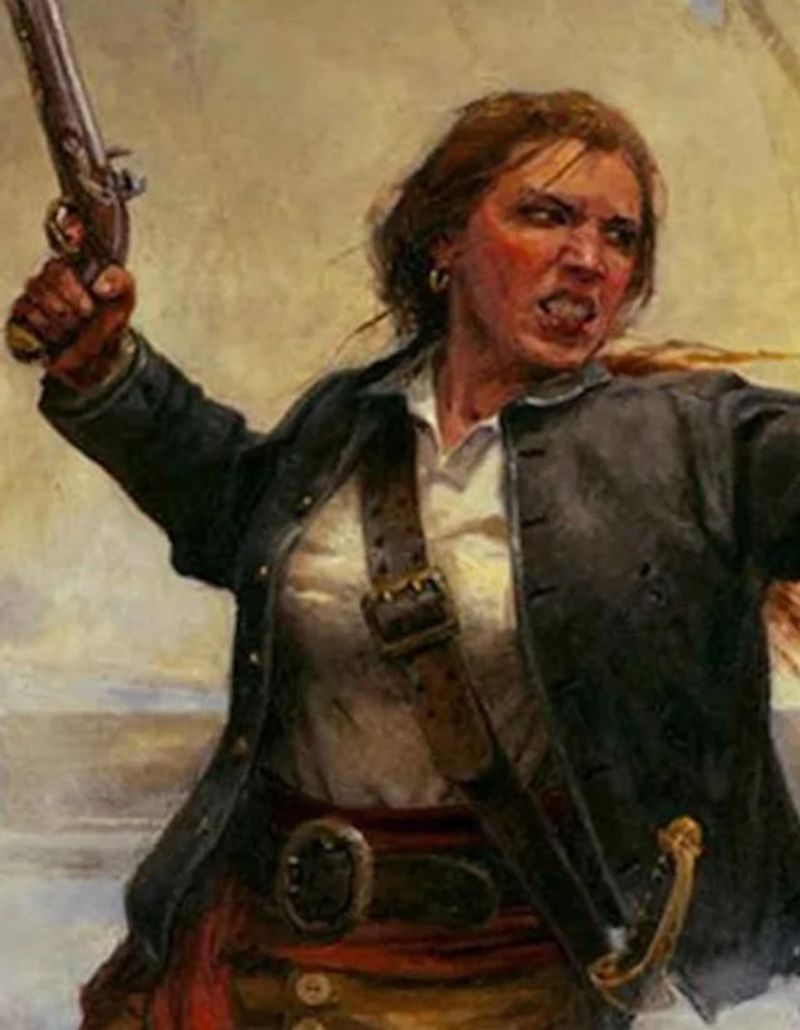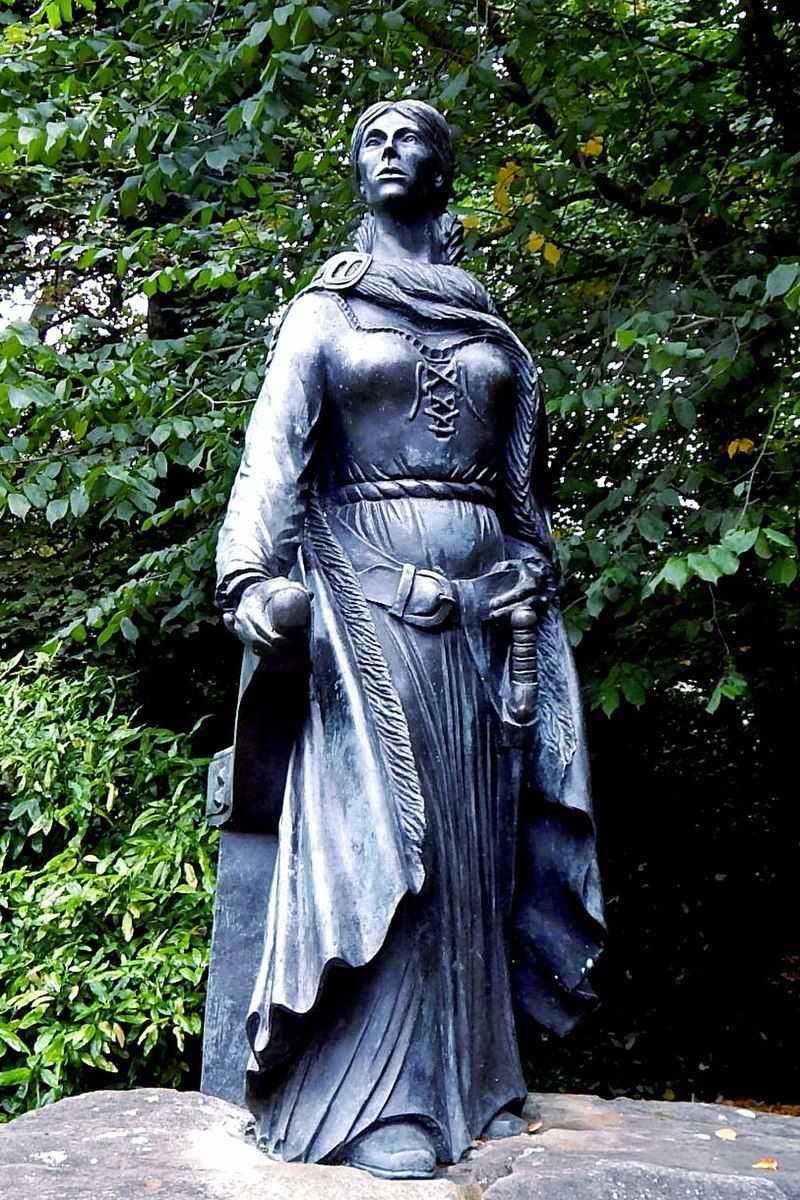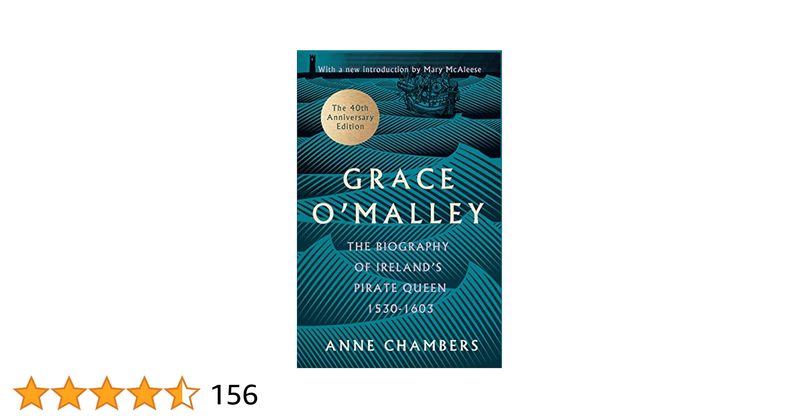Hidden in the waves of history lies one of the most extraordinary pirates who ever lived. Grace O’Malley ruled the seas off Ireland’s coast during the 1500s, commanding ships, leading men into battle, and standing up to Queen Elizabeth I herself. While male pirates like Blackbeard and Captain Kidd get all the glory, this fierce Irish woman built an empire through courage, cunning, and sheer determination during a time when women were expected to stay quietly at home.
1. Born Into Seafaring Royalty
Grace O’Malley entered the world around 1530 as the daughter of Owen O’Malley, a powerful Irish chieftain who controlled much of the coastline of County Mayo. The O’Malleys weren’t just any family – they were sea traders who collected taxes from ships passing through their waters.
Young Grace grew up surrounded by ships, sailors, and sea tales. Legend says she begged her father to join his trading expeditions, but he refused because her long hair might catch in the ship’s ropes.
Not to be denied, she reportedly chopped off her hair to prove her determination, earning the nickname “Granuaile” – meaning “bald Grace” in Irish.
2. Marriage as a Political Weapon
At age 16, Grace married Donal O’Flaherty, heir to another powerful Irish clan. This wasn’t just romance – it was politics. The strategic union expanded her family’s influence and trading territory along Ireland’s western coast.
Grace didn’t settle for being a typical noble wife. She actively participated in her husband’s business affairs and military campaigns, learning warfare tactics that would serve her later. When Donal died in battle against a rival clan, Grace refused to step aside.
Instead of retreating to widowhood, she gathered his followers, took command of his fleet, and established herself as a leader in her own right – shocking the male-dominated society around her.
3. The Castle Defender
After her husband’s death, Grace returned to her family’s castle at Rockfleet. When rival clans tried to seize it, they discovered Grace wasn’t easy prey. She organized the defense of her ancestral home with fierce determination, repelling attackers who thought a widow would surrender easily.
One famous story tells how she led her men from the castle walls, sword in hand, during a surprise attack. Her leadership was so effective that would-be invaders began to fear her reputation more than that of many male chieftains.
Grace understood that in 16th century Ireland, power had to be defended by force, and she proved repeatedly that she could outfight and outthink her enemies.
4. Commander of a Pirate Fleet
Grace didn’t just inherit ships – she built a formidable fleet that terrorized the waters around Ireland. At the height of her power, she commanded hundreds of men and as many as 20 ships that conducted both legitimate trade and piracy operations.
Her ships were swift galleys that could outmaneuver larger vessels and slip into hidden coves. These were perfect for surprise attacks on merchant ships passing through her waters. Grace demanded tribute (basically protection money) from all who sailed near her territory.
Spanish, English, and Scottish captains learned to fear the sight of her fleet’s approach, knowing they faced a choice: pay up or face the consequences from the Pirate Queen’s well-trained fighters.
5. The Legend of Childbirth in Battle
Perhaps the most incredible tale about Grace O’Malley involves her giving birth during a sea voyage. According to legend, Grace was leading her fleet when she went into labor aboard her ship. Below deck, she delivered her son, Theobald.
The very next day, Turkish pirates attacked her ship, believing the vessel would be easy prey with a woman who had just given birth. Grace’s men began losing ground in the battle. Hearing this, she rose from her bed, wrapped herself in a blanket, grabbed her guns, and stormed onto the deck.
Her sudden appearance and fierce leadership rallied her crew, who drove off the attackers. This became one of the most celebrated stories of her legendary toughness.
6. Master of Clever Tactics
Grace wasn’t just brave – she was brilliant at strategy. One famous trick involved hiding her armed men below deck while approaching valuable merchant ships. From a distance, her vessel would appear to be a simple trading ship with just a few sailors visible.
Once alongside their target, her warriors would suddenly emerge from hiding and swarm the surprised vessel before its crew could mount a proper defense. She also mastered coastal geography, using hidden coves and complex waterways to escape pursuers.
Unlike many pirates who relied on brute force, Grace’s success came from her intelligence and planning. She studied wind patterns, tides, and shipping routes to maximize her advantage against larger forces.
7. Meeting Queen Elizabeth I
In 1593, Grace O’Malley did something almost unthinkable – she traveled to London to meet Queen Elizabeth I face-to-face. The English had imprisoned her son and seized some of her property, and Grace wanted justice directly from the monarch.
The meeting between these powerful women fascinated the English court. Grace refused to bow, considering herself an equal sovereign. She carried a dagger into the royal presence (after getting permission), which shocked courtiers but impressed Elizabeth.
Most remarkably, they communicated in Latin since Grace spoke no English and Elizabeth no Irish. The Queen was so taken with Grace’s boldness and intelligence that she granted many of her requests, releasing her son and ordering the return of her property.
8. Widow by Day, Pirate by Night
After her first husband died, Grace made a strategic second marriage to Richard Burke, known as “Iron Richard.” Their unusual marriage agreement stated they would be wed for “one year certain,” after which either could end the relationship by simply saying “I dismiss you.”
Legend says that after the trial year ended, Grace called to her husband from her ship, “Richard Burke, I dismiss you!” while he was still inside his castle. She then sailed away with many of his possessions and kept control of his strategically important castle.
This clever maneuver allowed her to appear as a respectable widow in political dealings while maintaining her independence and piratical activities – showing her mastery of both social conventions and their loopholes.
9. The Howth Castle Kidnapping
One of Grace’s most audacious acts occurred when she visited Howth Castle near Dublin. Finding the gates locked against her (violating Irish hospitality customs), Grace became furious. She discovered the lord of the castle, Baron Howth, was having dinner.
Grace and her men stormed the castle, interrupting the meal. She kidnapped the baron’s young heir and took him back to her territory in Mayo. The baron frantically negotiated for his son’s return.
Grace’s ransom demand wasn’t money – it was that the gates of Howth Castle must never be closed to visitors again, and an extra place must always be set at dinner for unexpected guests. This tradition reportedly continued at Howth Castle for centuries afterward.
10. Defender Against English Expansion
While Grace is often called a pirate, many Irish considered her a freedom fighter. During her lifetime, English forces were expanding control over Ireland, threatening the traditional Gaelic way of life and the power of clan leaders like Grace.
She fiercely resisted English governors who tried to impose their authority in western Ireland. Her ships attacked English vessels, and she formed alliances with Irish rebels fighting against colonization. At one point, she even offered her ships and men to help Spain if they invaded England.
For the Irish people suffering under increasingly harsh English rule, Grace became a symbol of resistance and defiance – a reputation that has made her a folk hero in Ireland to this day.
11. The Pirate Who Died in Her Bed
Unlike many pirates who met violent ends at the gallows or in battle, Grace O’Malley died peacefully around 1603 at Rockfleet Castle – an extraordinary accomplishment for someone who made so many powerful enemies. She was approximately 70 years old, remarkably elderly for that time period.
Before her death, she made careful arrangements for her children’s futures and the distribution of her considerable wealth. Her son Theobald, nicknamed “Toby of the Ships,” continued her maritime traditions and became an important figure in his own right.
Grace was likely buried in the Cistercian Abbey on Clare Island, though her exact grave location remains uncertain. Her peaceful death after such a dangerous life is perhaps her final victory against the odds.
12. The Woman Who Commanded Men
In an era when women had almost no formal power, Grace commanded the absolute loyalty of hundreds of fierce fighting men. This was unprecedented in 16th century Europe, where women were largely excluded from military leadership.
Her crew followed her through storms, battles, and raids not because of her family name, but because she proved herself the most capable leader. Accounts describe her as physically strong, skilled with weapons, and possessing a natural authority that made men twice her size obey her commands without question.
Even more remarkably, she maintained this control for decades in a volatile environment where leadership challenges were common. Her enemies often underestimated her because of her gender – usually with disastrous consequences.
13. Multilingual Negotiator
Grace’s intelligence extended beyond battle tactics – she was also a skilled diplomat who spoke multiple languages. Besides her native Irish Gaelic, she could converse in Latin, which allowed her direct communication with foreign ship captains and, famously, Queen Elizabeth I.
Historical records suggest she may have understood some Spanish and Scottish dialects as well. These language skills gave her significant advantages in trade negotiations and political dealings across the British Isles and continental Europe.
Grace used this linguistic ability to build alliances, gather intelligence about shipping movements, and navigate the complex political landscape of her time. Her education was exceptional for a woman of her era, especially one known primarily for maritime warfare.
14. Mother and Warrior
Beyond her piratical exploits, Grace was a mother who raised four children while building her maritime empire. She had three children with her first husband (Margaret, Murrough, and Owen) and one son (Theobald) with her second husband.
Grace didn’t follow conventional motherhood of her time. She took her children to sea, taught them sailing and warfare, and prepared them to continue her legacy. When her son Owen was killed by the Joyce clan, Grace launched a revenge campaign that nearly destroyed them completely.
Her maternal fierceness extended to political maneuvering for her children’s futures. Her famous meeting with Queen Elizabeth was primarily motivated by securing her son Theobald’s release from English custody – showing that even her diplomacy was driven by family loyalty.
15. Erased from Official History
Despite her remarkable achievements, Grace O’Malley was largely erased from official English historical records. As a woman who defied gender norms and an Irish rebel who opposed English authority, she represented everything the English establishment wanted to forget.
Most of what we know about Grace comes from Irish oral traditions, folk songs, and scattered references in correspondence and local records. The English tendency to dismiss her as merely a “notorious woman” or “pirate’s wife” deliberately diminished her actual power and influence.
Only in recent decades have historians begun piecing together her true story, recognizing her importance not just in Irish history but as one of history’s most successful female leaders in warfare, politics, and maritime trade.
